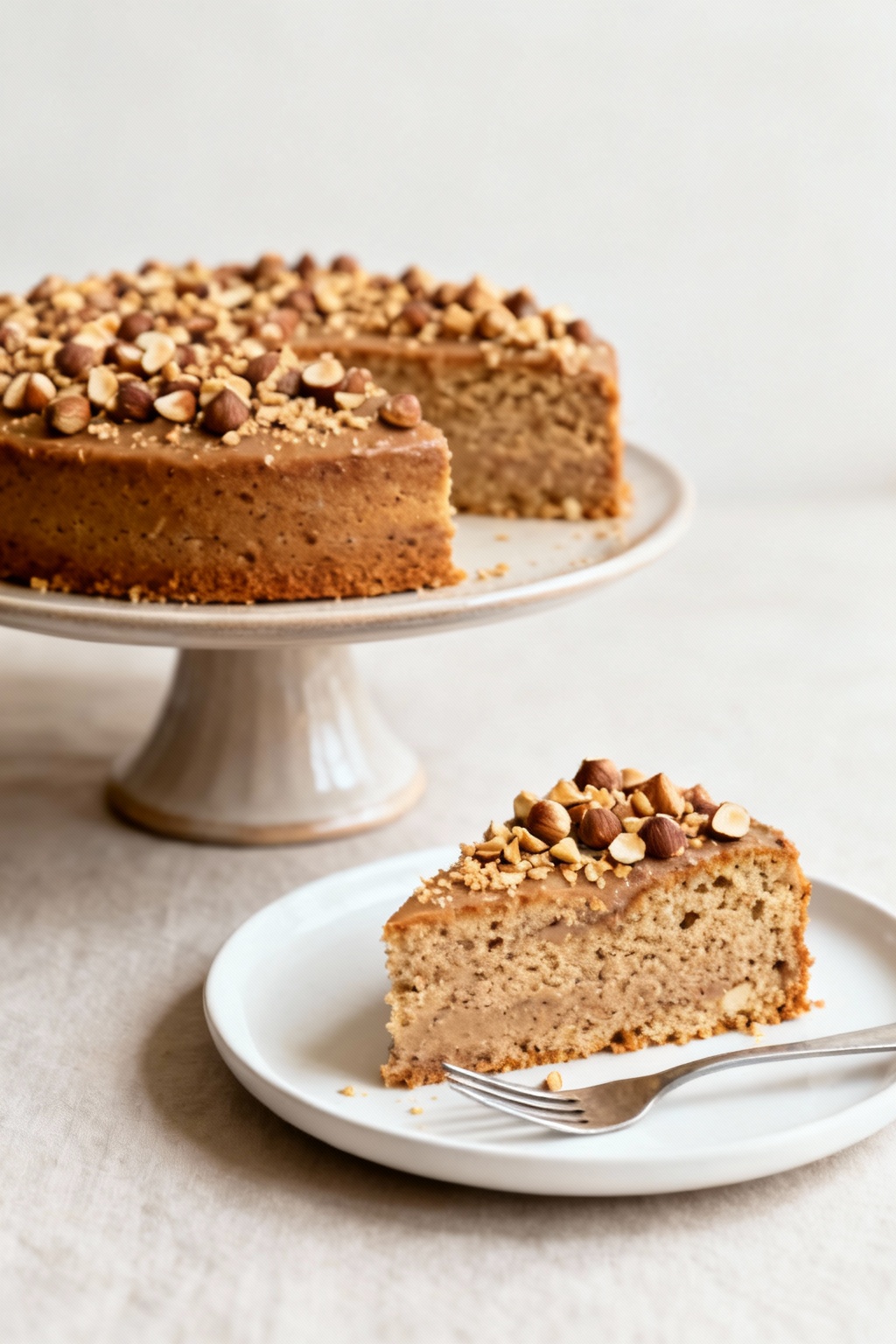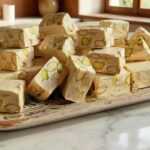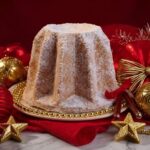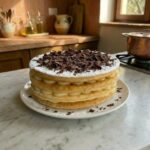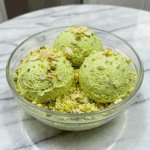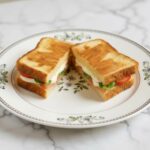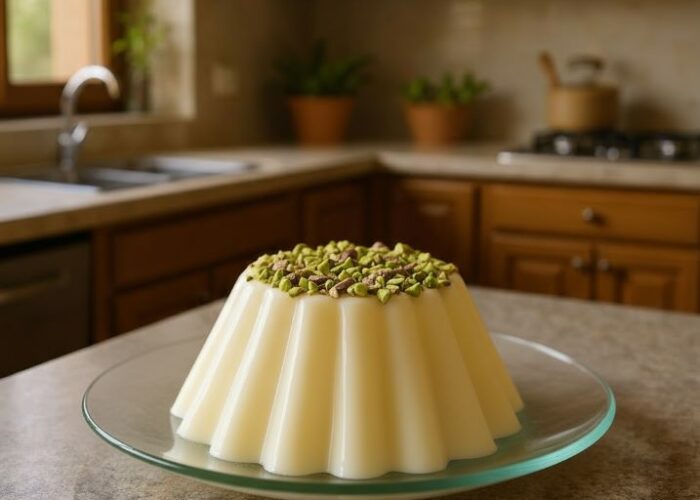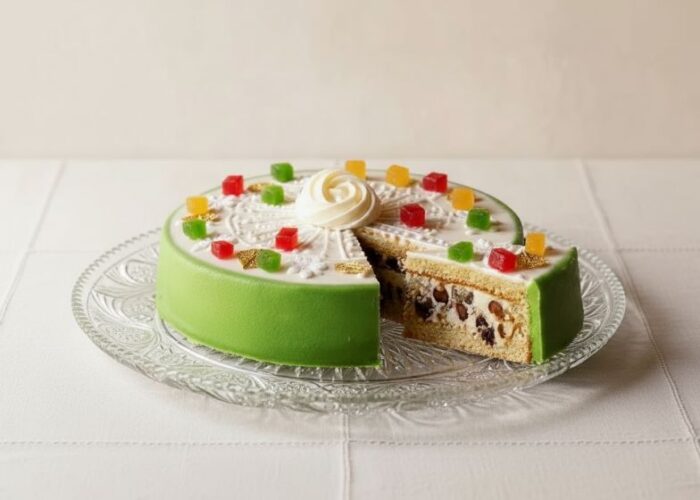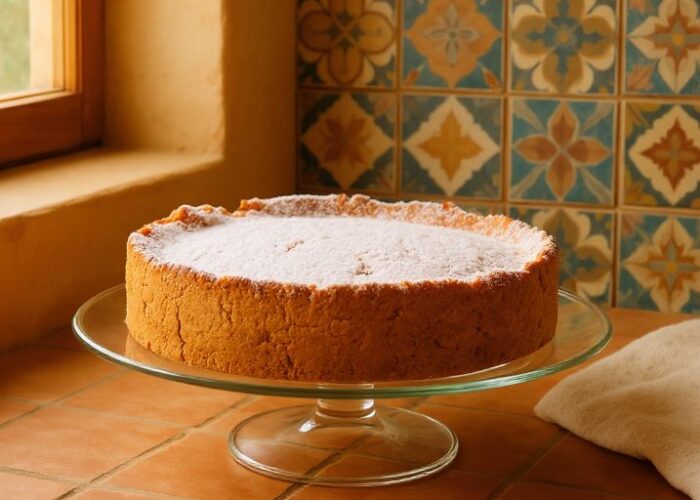Piedmontese Hazelnut Cheesecake: Italy’s Northern Soul
The Piedmontese Hazelnut Cheesecake is more than a dessert. It celebrates Italy’s northern countryside. Born in Piedmont (Piemonte), a land of rolling vineyards, truffle-covered hills, and hazelnut groves, this cheesecake captures the region’s essence. It showcases simplicity, elegance, and flavors rooted in tradition.
In Piedmont, hazelnuts are more than a crop. They are a symbol of the region. The famous Tonda Gentile delle Langhe hazelnut, grown in the misty hills near Alba, is prized for its delicate sweetness and creamy texture. Locals roast the nuts slowly, filling the kitchen with a warm, nutty aroma. This smell evokes home, comfort, and tradition.
When toasted hazelnuts meet fresh ricotta or mascarpone, something magical happens. The cheesecake becomes silky yet light. It is rich, but never heavy. It strikes a perfect balance between rustic charm and refined flavor.
A Dessert with Heart
This cheesecake is not about decoration or excess. Instead, it highlights honest, simple ingredients. Some versions include a drizzle of local honey. Others add a swirl of gianduja, Piedmont’s signature chocolate-hazelnut blend. Either way, every slice conveys the warmth of Italian hospitality and the quiet beauty of the Piedmont countryside.
It is a dessert meant to be shared. Enjoy it over coffee with friends, after Sunday lunch, or at the close of a long day. Pair it with a glass of Moscato d’Asti, and you’ll see why Piedmont is celebrated not just for its food, but for its way of life.
Typical Ingredients
The Piedmontese Hazelnut Cheesecake keeps things simple, no fancy tricks, just honest ingredients that speak for themselves. Each one reflects the soul of Piedmont: rich dairy, toasted hazelnuts, and a touch of sweetness that feels comforting and natural.
For the Crust
Toasted hazelnuts, finely ground the star of the show, adding warmth and nutty depth
Plain biscuits or Savoiardi (ladyfingers), for a delicate, crumbly base
Butter, melted binds everything together and adds a golden touch
A pinch of salt to balance the sweetness and enhance the hazelnut flavor
For the Filling
Ricotta or mascarpone cheese — soft, creamy, and mildly sweet
Fresh cream or a little yogurt — for lightness and smooth texture
Sugar or honey, depending on taste; honey adds a floral note typical of Italian desserts
Eggs, to create that soft, custard-like consistency
Toasted hazelnut meal, for extra nuttiness throughout the filling
A splash of vanilla or a grating of lemon zest, subtle accents that lift the flavor
Flavor Variations
Chocolate-Hazelnut Swirl
Fold in a few tablespoons of gianduja or melted dark chocolate into the filling.
Creates a rich, marbled effect and deepens the nutty flavor.
Citrus Twist
Add extra lemon or orange zest to the filling.
Gives a bright, fresh contrast to the creamy, nutty base.
Coffee Infusion
Mix in a teaspoon of instant espresso or strong brewed coffee to the filling.
Perfect for pairing with an after-dinner digestif.
Caramel Drizzle
Top the cheesecake with warm caramel sauce before serving.
Adds a sweet, buttery layer that complements the roasted hazelnuts.
Spiced Variation
Sprinkle in a pinch of cinnamon, nutmeg, or cardamom to the filling.
Adds a cozy, aromatic touch for fall or winter gatherings.
Serving
The Piedmontese Hazelnut Cheesecake is best enjoyed chilled, allowing the flavors to meld and the texture to set perfectly.
Slicing: Use a sharp knife dipped in hot water and wiped clean between cuts. This ensures clean, smooth slices.
Garnishing: Sprinkle with chopped toasted hazelnuts, a light dusting of cocoa or powdered sugar, or drizzle with honey for an elegant finish.
Pairings: Serve with a cup of espresso or coffee, a small glass of Moscato d’Asti, or a light dessert wine to enhance the flavors. Perfect for family gatherings, holiday dinners, afternoon coffee breaks, or as a special treat after a Sunday lunch.
Storage
Proper storage helps maintain the cheesecake’s creamy texture and nutty flavor. Here’s how to keep it fresh:
Refrigeration:
Cover the cheesecake tightly with plastic wrap or a cake dome. Store in the fridge for up to 3 days. This keeps the filling smooth and prevents the crust from becoming soggy.
Freezing:
Wrap the cheesecake (whole or in slices) in plastic wrap and then foil. Freeze for up to 1 month. Thaw overnight in the fridge before serving for best results.
Let chilled cheesecake sit at room temperature for 10–15 minutes before slicing. This slightly softens the filling, making it easier to cut and enhancing the flavors. Proper storage ensures every slice is as nutty, creamy, and flavorful as the first one.

